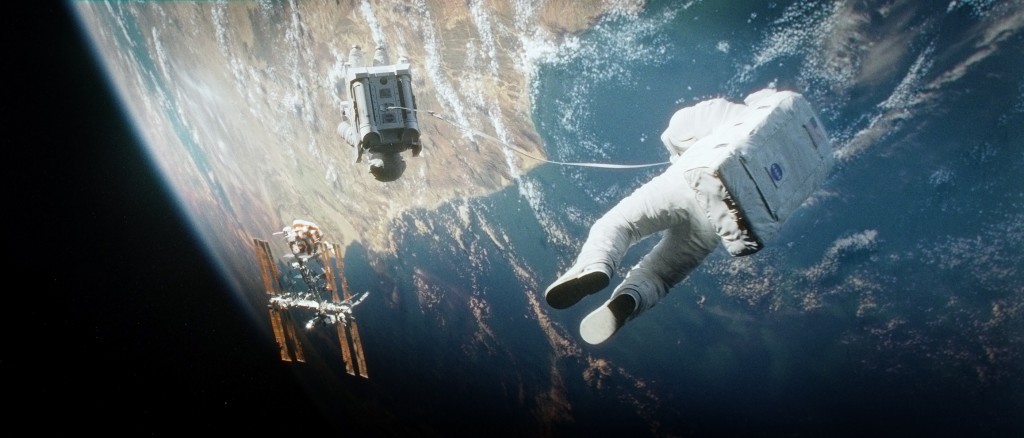(October 8, 2013) — With an opening domestic weekend box office of $56 million, which includes $11 million from IMAX screens, director Alfonso Cauron’s Gravity inherits the enormous scope of giant screen documentaries but expands upon it with a visually dramatic disaster and emotionally gripping story.
The giant screen documentary’s relationship with disasters is best personified by 1992’s Fires of Kuwait and 1998’s Everest, both of which documented a moment in time on film, with real disasters in the making and their aftermath. These films, because of their scope, allow both an external exploration of a world unraveling and an internal exploration of our place within it.
A key component of Gravity is the 3D presentation, giving a sense of depth not only for the film’s set pieces, but in moments of isolation allowing for introspection. In some theaters the Gravity experience is enhanced with D-Box immersive motion seats – another component of specialty cinema moving into mainstream presentations.
Because 3D rigs proved too problematic for shooting on set, it was decided to convert the film in post production. The stereo conversion was conducted by Prime Focus, the same company that was entrusted by Warner Bros. with converting The Wizard of Oz. Some of the 3d conversion patents utilized by Prime Focus were first used on the giant screen in James Cameron’s 2005 documentary Aliens of the Deep.
A film of this scope is well-suited to play on the biggest screens, and Gravity is doing well in IMAX theaters. Gravity was one of the films named in November 2012 when Warner Bros. extended its partnership with IMAX. The IMAX film Hubble 3D was used as reference for the space scenes in Gravity.
In select non-IMAX theaters, the movie is being offered in Dolby Atmos, a 64-channel sound system, where each speaker surrounding the auditorium and lining the ceiling is its own channel. A special sound mix was created for these theaters that takes full advantage of the action and debris on screen and the space in the auditorium.

